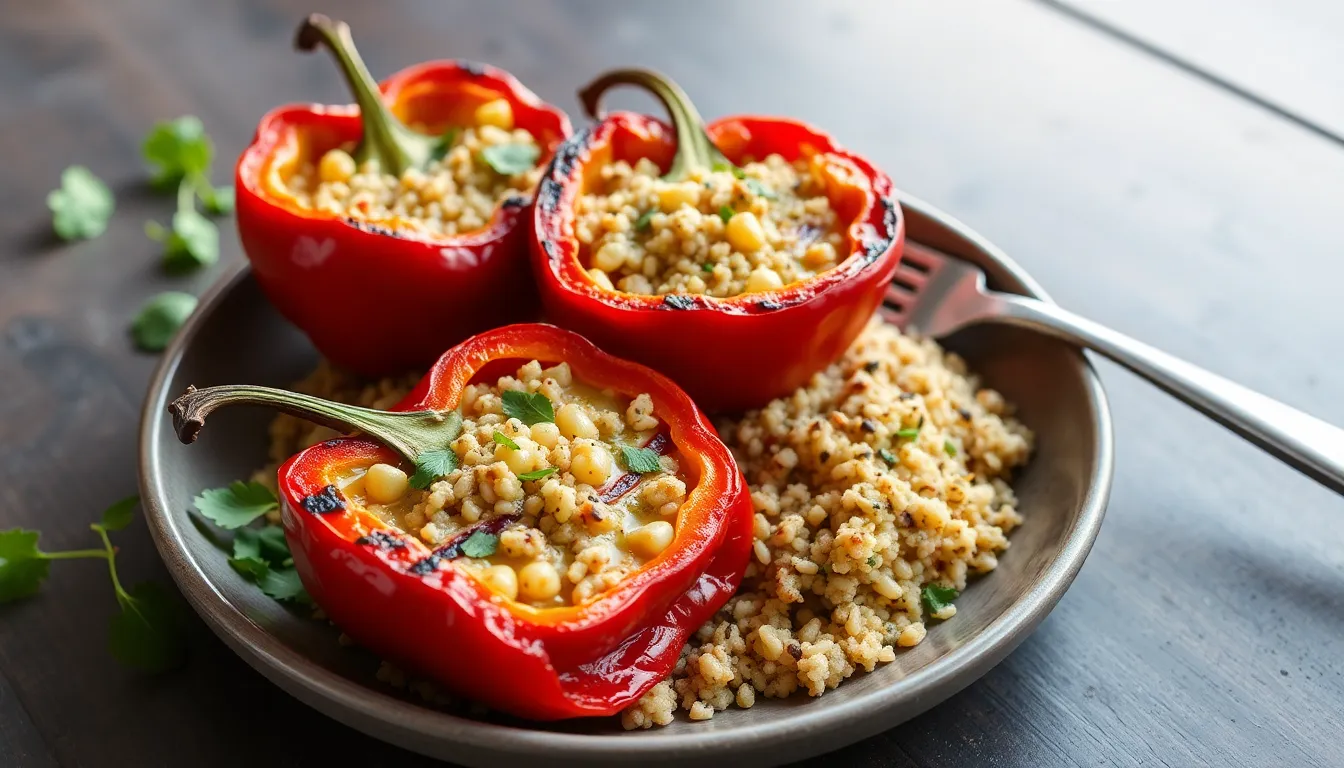Sautéing for Flavor: Using Aromatics to Enhance Your Dishes
Introduction
Sautéing is one of the most fundamental cooking techniques that every budding chef should master. It involves cooking food quickly in a small amount of fat over relatively high heat. This method not only allows for the preservation of texture and color but also enhances the flavors of the ingredients used.
Aromatics play a crucial role in culinary practices. These flavor-boosting ingredients are often the foundation upon which many dishes are built, bringing depth and complexity to meals. In this article, we will explore the art of sautéing and the magic of aromatics, guiding you through the techniques, essential aromatics, and recipes that will elevate your cooking.
Section 1: Understanding Sautéing
Sautéing is defined as cooking food quickly in a small amount of oil or fat over relatively high heat. This technique is perfect for cooking tender cuts of meat and fresh vegetables, preserving their natural flavors and textures.
Key Techniques and Tips for Perfect Sautéing
- Optimal Heat Levels: Start with a medium-high heat to quickly sear the ingredients, then adjust the heat as necessary to avoid burning.
- Choosing the Right Pan: Use a wide, heavy-bottomed skillet or frying pan to allow even heat distribution and prevent food from steaming.
Section 2: What Are Aromatics?
Aromatics are ingredients that enhance the flavor and aroma of dishes. They are often sautéed at the beginning of the cooking process to infuse their flavors into the oil, which then permeates the other ingredients as they cook.
Common Types of Aromatics
- Onions: Sweet when cooked, they form the base of many dishes.
- Garlic: Adds a pungent, savory flavor that enhances nearly any recipe.
- Herbs: Fresh or dried herbs like thyme and rosemary bring earthiness and depth.
- Spices: Cumin and coriander provide warmth and complexity to various cuisines.
Common Aromatics and Their Flavor Profiles
| Aromatic | Flavor Profile | Best Used With |
|---|---|---|
| Onions | Sweet, savory | Meats, vegetables |
| Garlic | Pungent, sweet | Pasta, seafood |
| Thyme | Earthy, minty | Soups, stews |
| Rosemary | Pine-like, woodsy | Poultry, potatoes |
| Cumin | Warm, nutty | Curries, Mexican dishes |
| Coriander | Citrusy, herbal | Salads, sauces |
Section 3: How to Sauté with Aromatics
To sauté with aromatics effectively, follow this step-by-step guide:
Step-by-Step Guide to Sautéing with Aromatics
- Preparing the Aromatics: Chop onions, mince garlic, and measure out herbs and spices.
- Heating the Pan: Place your pan on medium-high heat and add a suitable fat, such as olive oil or butter.
- Adding Aromatics: Start with onions and let them cook until translucent. Then add garlic, stirring frequently to avoid burning.
- Timing for Each Aromatic: Add tougher aromatics like cumin first, followed by softer ones like coriander or fresh herbs last, right before serving.
Balancing flavors is essential. Taste as you go, and adjust seasonings to achieve the desired profile.
Section 4: Recipes Featuring Aromatics
Here are some easy and delicious recipes that highlight the use of aromatics in sautéing:
1. Quick Sautéed Vegetable Medley
This colorful vegetable dish is perfect as a side or over rice.
Ingredients:
- 1 onion, sliced
- 2 cloves garlic, minced
- 1 bell pepper, sliced
- 2 zucchinis, chopped
- 1 cup broccoli florets
- Olive oil, salt, and pepper to taste
Cooking Technique:
- Heat olive oil in a pan over medium-high heat.
- Add onions and cook until translucent.
- Add garlic, stirring for a few seconds, then add the remaining vegetables.
- Sauté until vegetables are tender-crisp. Season with salt and pepper.
2. Aromatic Chicken Stir-Fry
This stir-fry is packed with flavor and perfect for a quick weeknight dinner.
Ingredients:
- 1 lb chicken breast, sliced
- 1 onion, sliced
- 2 cloves garlic, minced
- 1 tablespoon ginger, minced
- 2 bell peppers, sliced
- Soy sauce, sesame oil, and salt to taste
Cooking Technique:
- Heat sesame oil in a large pan over medium-high heat.
- Add onions, garlic, and ginger, sautéing until fragrant.
- Add chicken and cook until it’s browned and cooked through.
- Finally, add bell peppers and soy sauce, cooking until heated through.
3. Garlic and Herb Shrimp
This quick dish is perfect for a fancy dinner or a weeknight meal.
Ingredients:
- 1 lb shrimp, peeled and deveined
- 4 cloves garlic, minced
- 2 tablespoons fresh parsley, chopped
- 1 tablespoon lemon juice
- Butter and olive oil
Cooking Technique:
- In a pan, heat equal parts butter and olive oil over medium heat.
- Add garlic, cooking for a minute until fragrant.
- Add shrimp, cooking until pink and opaque.
- Finish with parsley and lemon juice before serving.
Section 5: Troubleshooting Common Issues
Even seasoned cooks can run into issues when sautéing with aromatics. Here’s how to troubleshoot some common problems:
How to Avoid Burning Aromatics
- Use medium heat instead of high heat.
- Monitor closely and stir frequently.
- Add a splash of broth or water if they begin to brown too quickly.
Fixing Overly Pungent Flavors
- Add a pinch of sugar to balance out the flavors.
- Incorporate more vegetables or proteins to dilute the intensity.
- Consider adding a splash of citrus or vinegar to refresh the dish.
Adjusting Seasoning for Balance
- Taste often and adjust salt or acid as needed.
- Add fresh herbs or spices at the end of cooking for a finishing touch.
- A drizzle of olive oil before serving can enrich flavors.
Conclusion
Aromatics are essential to the art of sautéing, transforming simple ingredients into flavorful masterpieces. By understanding how to use them effectively, you’ll enhance your culinary skills and create dishes that impress. Don’t hesitate to experiment with different combinations of aromatics to find what suits your palate best. Share your experiences or favorite aromatic combinations in the comments—happy sautéing!




